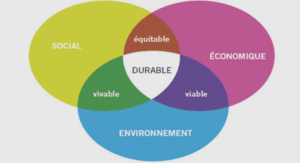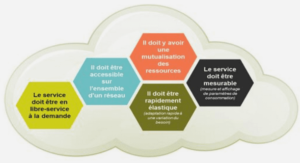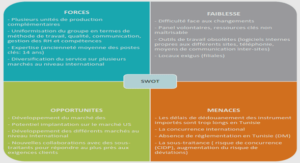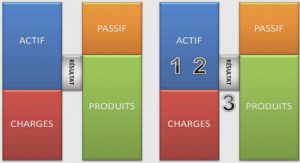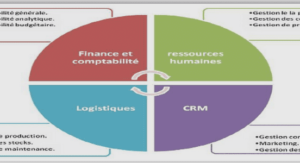Presentation of the language and the Gaabuŋkoore dialect
Pulaar language is known under different names but it is also referred to as Fula which is a family of languages spoken by the Fula people of West Africa in the sub-Sahara regions going from Senegal to Chad. It is one of the most popular languages in West African Niger –Congo languages, classified in the West Atlantic branch of this family of language. The total number of Pulaar speaker is not known but the estimations of the natives turns around 17 220 000 by Bermend (2004) who did not take into account the Pulaar speakers of Mauritania, Ghana and Burkina Faso. According to Calvet, the number of Pulaar speakers is about 20 061 300. Pulaar is given different names according to the geographical areas: Fula, Fulfulde, Pular and Pulaar. The language has many dialects among others: Adamawa Fulfulde, Bagirmi Fulfulde, Borgu Fulfulde, Maasina Fulfulde, Pulaar and Pular.
Some dialectal variations
The term Pulaar is used in Senegal instead of Fula. Therefore, according to (BA, 2013) Pulaar language is marked by some noticeable dialectal differences which manifests through different manners in different domains. There are words used by some dialects to mean the same thing, but employing different lexical items. Nonetheless, it is very difficult to see in all dialects of Pulaar different words to refer to the same and unique thing. Just to say it is very rare to see in Pulaar a word which is not shared by at least two dialects As far as Senegal is concerned,we may distinguish different dialects that are represented by different geographical areas.So much so that, in Senegal there are four major varieties of Pulaar: Fuuta Tooro(north-east part); Kabaada/Toore(southern Senegal); Fula/Fulakunda(located in the south of Senegal and in east of Kabaada) and then we have “Pular” spelled with one “a” is mainly spoken by immigrants from Guinea Konakry who are scattered in the country. 6 There are also some minor differences in the way some Pulaar dialects combine words to form sentences. Here are some of them taken from (BA, 2013) which show that the dialects of Pulaar spoken in Senegal may differ in the way they form their sentences. Thus, some of these can be noticed in the verbal complex, which, in the case of Toore, the perfective marker – m (a), follows the past marker (-no) and the object clitic pronouns (- moo). In Fuuta, Fulakunda and Pular we notice in the opposite, the presence of the perfective morpheme (-ii) that precedes both past tense and the object clitic pronoun (-mo) as illustrated in the following examples.
Presentation of the Gaabuŋkoore dialect of Pulaar
From the extremity of Cap-vert until beyond the Lake Chad, on all the Sudano-Sahelian area located between the two spaces, Pulaar or Fulfulde is spoken in different degrees depending on the linguistic areas. (KA, 1982). In Senegal, the speakers of Pulaar are divided according to the statistics in: “peuls”, “toucouleurs”, “loabés and fulas”. After a study of the dialects in Senegal, we notice that in the country, there are sixteen dialects such as: Fouta Djalon, Fulakunda, Gaabu (Falakunda, Gaaɓu), Central Senegal/Fulaaɓe, Pulaar, West-Maasina, East-Maasina, Douenza, Seeno, Barani, South Tougan, Wahiguya and surroundings, Msi-Gurma, Jelgooji, Liɓtaako, Gawooɓe, Say-Wuro Gelaajo. (KA, 1982). When we try to retrace their history, we notice that most of the pulaar speakers are coming from Fuuta Tooro (Ex: the Pulaar of Kabada, Tooroɓɓe of the Gambia and from Casamance, etc…). Therefore, the majority of the pulaar speakers of the Fulakunda group support that they come from East and South-East (Fouta Djalon, Badiar). 7 In a narrower scale, we can say that the Southern group of Pulaar doesn’t have the same geographical extent than that of the North. It covers from West to East the following traditional regions: – In the North: Badibou, middle and Upper Gambia(Upper Divisions, region of Bassey), South of Niani-Wouli, South of Ɓunndu(caatli); – In the South: from Upper Casamance, Kabada, Pakao, the entire Fouladou and the Senegalese Gaabu, the South-West of Easter Senegal. The Pulaar speakers of the Fuladu area might have found the Mande people, who had already settled in. The latter came from Mali and were heading for West Africa to conquer the Gaabu and consolidate the political influence of the Mande Empire. The presence of those Pulaar people was of a great help to their Mande neighbours who considered themselves as the masters of the area because the Fulani provided them with agricultural and stock breeding products. (Diallo, 2009). In fact, the Mande conquered the land from the first inhabitants: the Baïnunks. Moreover, the Mande had imposed a harsh domination to the Fulanis and so much so that, the Fulanis felt humiliated. They were waiting for the proper moment to revolt against the Mande power. Guided by Alfaa Moolo and his son Muusa Moolo, with the help of Fuuta Jaloŋ Fulanis commanded by Alfaa Ibrahiima of Labe and those of Ɓunndu lead by Almaami Buubakar Saada, they got involved in the battle called Kansala that ends up with the victory of the Fulanis in 1865. (Mané, 1978). This will bring about the destruction of the Mande Empire of Gaabu, despite the attempts of resistance entertained by Dianké Wally. Therefore we dare say that it’s on the ruins of Gaabu that Fuladu was born.
Context and justification
National languages had been left aside by almost all governmental policies, meaning that foreign languages were privileged. People went to school to learn foreign languages such as French, Spanish, and English etc. But nowadays with the advance of linguistics as a science, the study of the diversities in languages has led researchers to be more interested in languages. African languages are now taught to local populations through the programs of literacy. That way, even strangers have the possibility to come and learn that languages which are very rich in terms of linguistic features. By doing this work, we participate in the enrichment of linguistics and to be more precise African language studies. The choice of the subject is done after careful consideration based on the problems that African languages face in term of linguistic studies. The topic language is a language we know well because it is our mother tongue, spoken natively. Our aim in doing this study is to open the way to future linguistic students and researchers to better understand how languages function. The matter we intend to deal with is very important for us because more and more , we notice that the young generation of Pulaar language speakers are tending to modernity so much so that they start losing some words which are crucial to speak a language in proper way. We have noticed that many of our little brothers and sisters are no longer able to utter question in Pulaar. They often use French question in combination with remaining necessary Pulaar words, this urges us as linguists to try to think about how we can contribute in solving that phenomenon. By the way we will enlarge the research to our speciality meaning English language. As we have stated it in our topic, the question will focus mainly on grammar to be more precise on interrogatives constructions. Our work will consist on a contrastive analysis of interrogations in English and Gaabuŋkoore. That work will constitute a grammatical study of all the aspects of interrogative constructions as far as English and Gaabuŋkoore are concerned. We cannot deal with grammatical rules without paying attention to the way words and phrases combine to form meaningful sentences and this is the domain of syntax. Syntax is concerned with the scientific study of sentences. 9 Doing a contrastive study means at the same time showing the similarities and the differences between two or more languages. We are going to define what is an interrogation? What is the morpho-syntactic structure of interrogative constructions in Gaabuŋkoore? All these details will constitute the path way to reach our aim in making a comparative study of English and Gaabuŋkoore. The purpose of the study is to permit the researchers and linguistic student to have better view and understanding of the way interrogative constructions are formed. Therefore our contrastive study of the language will raise many questions. These question will be answered based on the documents we have in possession but the truth is to admit that there are few documents dealing with this aspect of the Gaabuŋkoore dialect.
Theoretical and conceptual framework
Theoretical framework
Our research consists in the establishing of all the possible combinations, of words to build up interrogative sentences. To succeed in this task, we must take into consideration the branch of linguistics which is more adequate for that analysis and this urges us to follow the path way of the linguistic approach that stresses the importance of language as a system and which investigates the place that linguistic units such as words, sentences have within the system. This, brings us in the domain of structural linguistics. The term has been used by various groups of linguists, including those of Prague school, but its use is most often attributed to a group of American linguists such as BLOOMFIELD and FRIES, they published mainly between the 1930’s and the 1950’s. The work of these linguists was based on the theory of Behaviourism. Our approach to the study of interrogative constructions in English and Gaabuŋkoore shows that our orientation in the linguistic domain will be characterized by the issue raised. And since we are dealing with sentence structure, we are in the field of structural linguistics. Structural linguistics is a branch of linguistics based on the works of FERDINAND de SAUSSURE which follows the methods and technics of structuralism. To do a structural linguistic study of a language, we must build up a corpus, that corpus may be gathered using different technics and tools.
Conceptual framework
A dialect: A regional variety of a language possessing enough specific characteristics to be considered as a linguistic system in itself. It is often associated with a particular accent. But sometimes, a given dialect gains status and becomes the standard variety of a country. A dialectal variant: When there is mutual intelligibility between communities sharing the same geographical area, we say that they are speaking variants of the same dialect. Coordination: Co-ordination, is the use of co-ordinating conjunctions (also known as co-ordinators) such as and, or, but. These join linguistic units which are equivalent or of the same rank (RICHARDS and SCHMIDT, 2010). Contrastive study: Known under the names of contrastive analysis or contrastive linguistics is concerned with the synchronic, comparative study of two language varieties. Generally, both differences and similarities in languages are studied. Foreign language: Also non-native language a language which is not the native language of large numbers of people in a particular country or region, is not used as a medium of instruction in schools, and is not widely used as a medium of communication in government, media, etc. Foreign languages, are typically taught as school focus on forms subjects for the purpose of communicating with foreigners or for reading printed materials in the language. (RICHARDS, and SCHMIDT, 2010). Head-to-head movement: The rules that move one head into another, called, head-to-head movement (CARNIE,2013). 12 Interrogative constructions: They have been described by Routledge dictionary of language and linguistics as: a class of sentences in which the hearer is requested to give an information about something. Since we are working on the different forms of interrogative constructions, we judge it necessary to show how the words are structured in both languages and this is another branch of linguistics.
Abbreviations |
